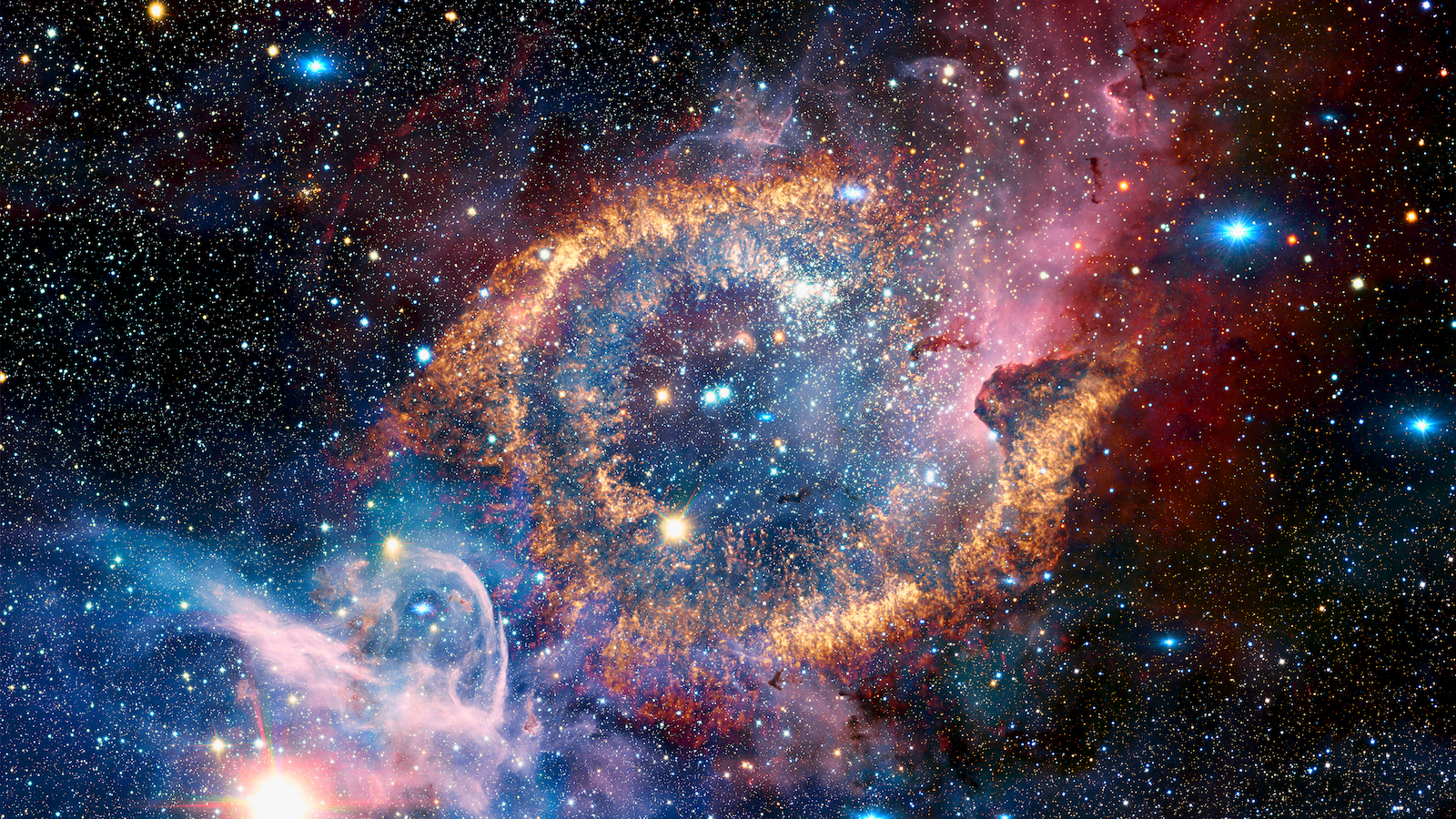Astronomers Create 8 Million Baby Universes Inside a Computer and Watch Them Grow. Here's What They Learned.
What can simulating 8 million universes tell us about the history of our own universe?

A team of astrophysicists has just spawned 8 million unique universes inside a supercomputer and let them evolve from just tots to old geezers. Their goal? To nail down the role that an invisible substance called dark matter played in our universe's life since the Big Bang and what it means for our fate.
After discovering that our universe is mostly composed of dark matter in the late 1960s, scientists have speculated on its role in the formation of galaxies and their ability to give birth to new stars over time.
According to the Big Bang theory, not long after the universe was born, an invisible and elusive substance physicists have dubbed dark matter began to clump together by the force of gravity into massive clouds called dark matter haloes. As the haloes grew in size, they attracted the sparse hydrogen gas permeating the universe to come together and form the stars and galaxies we see today. In this theory, dark matter acts as the backbone of galaxies, dictating how they form, merge and evolve over time.
Related: The 11 Biggest Unanswered Questions About Dark Matter
To better understand how dark matter shaped this history of the universe, Peter Behroozi, an assistant professor of astronomy at the University of Arizona, and his team created his own universes using the school's supercomputer. The computer's 2,000 processors worked without pause over a span of three weeks to simulate more than 8 million unique universes. Each universe individually obeyed a unique set of rules to help researchers understand the relationship between dark matter and the evolution of galaxies.
"On the computer, we can create many different universes and compare them to the actual one, and that lets us infer which rules lead to the one we see," Behroozi said in a statement.
While previous simulations have focused on modeling single galaxies or generating mock universes with limited parameters, the UniverseMachine is the first of its scope. The program continuously created millions of universes, each containing 12 million galaxies, and each allowed to evolve over nearly the entire history of the real universe from 400 million years after the Big Bang to the present day.
Sign up for the Live Science daily newsletter now
Get the world’s most fascinating discoveries delivered straight to your inbox.
"The big question is, ‘How do galaxies form?’" said study researcher Risa Wechsler, a professor of physics and astrophysics at Stanford University. "The really cool thing about this study is that we can use all the data we have about galaxy evolution — the numbers of galaxies, how many stars they have and how they form those stars — and put that together into a comprehensive picture of the last 13 billion years of the universe."
Related: From the Big Bang to Present: Snapshots of Our Universe Through Time
Creating a replica of our universe, or even of a galaxy, would require an inexplicable amount of computing power. So Behroozi and his colleagues narrowed their focus to two key properties of galaxies: their combined mass of stars and the rate at which they give birth to new ones.
"Simulating a single galaxy requires 10 to the 48th computing operations," Behroozi explained, referring to an octillion operation, or a 1 followed by 48 zeros. "All computers on Earth combined could not do this in a hundred years. So to just simulate a single galaxy, let alone 12 million, we had to do this differently."
As the computer program spawns new universes, it makes a guess on how a galaxy's rate of star formation is related to its age, its past interactions with other galaxies and the amount of dark matter in its halo. It then compares each universe with real observations, fine-tuning the physical parameters with every iteration to better match reality. The end result is a universe nearly identical to our own.
According to Wechsler, their results showed that the rate at which galaxies give birth to stars is tightly connected to the mass of their dark matter haloes. Galaxies with dark matter halo masses most similar to our own Milky Way had the highest star-formation rates. She explained that star formation is stifled in more massive galaxies by an abundance of blackholes
Their observations also challenged long-held beliefs that dark matter stifled star formation in the early universe.
"As we go back earlier and earlier in the universe, we would expect the dark matter to be denser, and therefore the gas to be getting hotter and hotter. This is bad for star formation, so we had thought that many galaxies in the early universe should have stopped forming stars a long time ago," Behroozi said. "But we found the opposite: Galaxies of a given size were more likely to form stars at a higher rate, contrary to the expectation."
Now, the team plans to expand the UniverseMachine to test more ways dark matter might affect the properties of galaxies, including how their shapes evolve, the mass of their black holes and how often their stars go supernova.
"For me, the most exciting thing is that we now have a model where we can start to ask all of these questions in a framework that works," Wechsler said. "We have a model that is inexpensive enough computationally, that we can essentially calculate an entire universe in about a second. Then we can afford to do that millions of times and explore all of the parameter space."
The research group published their results in the September issue of the journal Monthly Notices of the Royal Astronomical Society.
- Dark Matter and Dark Energy: The Mystery Explained (Infographic)
- History of Computers: A Brief Timeline
- Are We All in a Simulation?
Originally published on Live Science.









